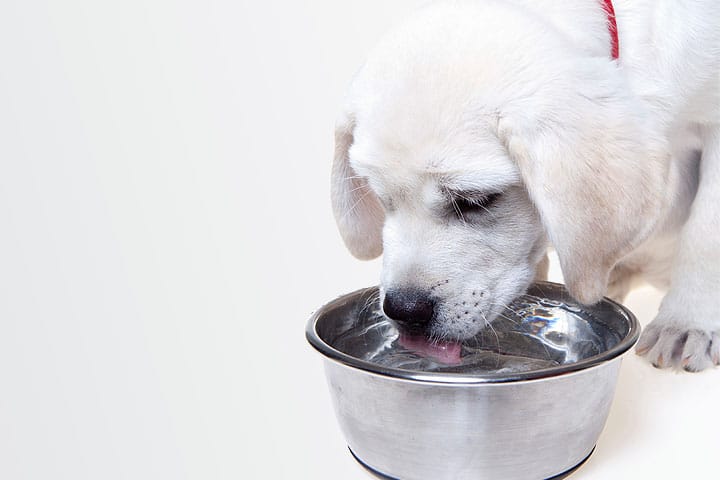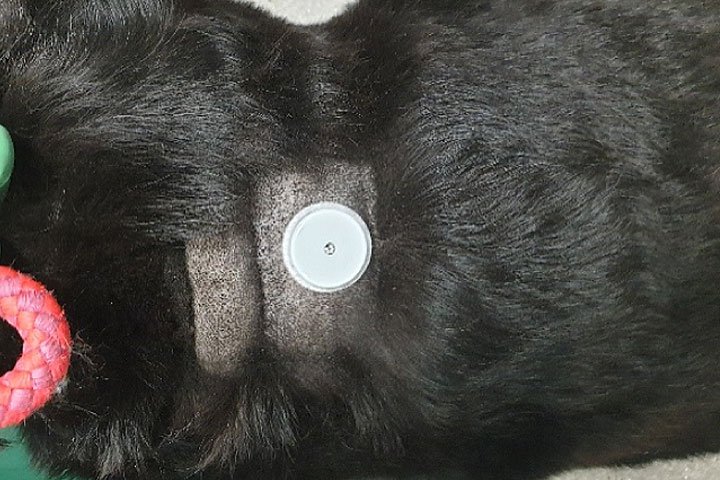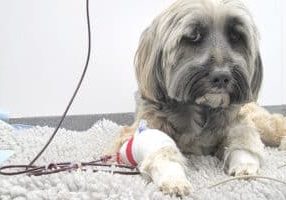
Diabetes Mellitus can be a frustrating condition for both owners and clinicians alike.
Establishing the correct insulin dose to ensure clinical signs are controlled and complications such as ketoacidosis and hypoglycaemic seizures are avoided can be time consuming, confusing and in some cases, it can seem impossible!
A myriad of both traditional and novel monitoring exists. Here we discuss some of the benefits and pitfalls of the various techniques available.
Clinical signs and physical examination findings
An inexpensive method of observations including trends in weight, demeanour, exercise tolerance, appetite, severity of polyuria and polydipsia, signs of vomiting, diarrhoea or hypoglycaemic events.
Although this basic method should form the cornerstone of monitoring in all diabetic patients, it is often overlooked. All other results should be interpreted in combination with these observations.
Urinalysis results
Glucose and ketone measurement.
At home dipsticks can be considered, particularly for cases where cost is a concern or when alternative methods cannot be regularly used. The results can provide guidance, however the magnitude of hyperglycaemia cannot be inferred from the magnitude of glucosuria. In addition, there is no ability to determine whether hypoglycaemic periods have occurred and there is a lag between hyperglycaemia and the development of glucosuria.
Glycosylated plasma proteins
Frustosamine measurement.
Commonly used, particularly in feline patients, the frustosamine result should reflect the average blood glucose over the preceding 2-3 weeks. This is an easy test to perform, with huge advantages in stressed patients, or for owners who cannot perform regular glucose monitoring. However, although there are published target levels, its ability to accurately and safely guide insulin adjustments to positive effect has never been fully established.
Glycosylated haemoglobin
HbA1c measurement.
In human medicine, the glycosylated haemoglobins, in particular HbA1c are frequently used to monitor and predict the development of diabetes. HbA1c indirectly determines the average blood glucose over the preceding 2-3 months, making it an extremely useful tool in human medicine to help establish whether chronic control has been achieved and if changes or interventions have made a sustained difference. In veterinary medicine, studies are in their infancy but there is some evidence that this biomarker could be useful in our patients, however further evidence is needed.
Glucose measurements at various time points (including glucose curves)
Spot blood glucose curves can be performed at home or in practice, with varying frequency of measurements recommended.
Continuous glucose monitoring systems which measure interstitial fluid glucose concentrations and record the result every 1-5 minutes over a period of up to 14 days can also be considered. Older systems required regular calibration with blood glucose measurement input. A novel cost-effective factory calibrated flash glucose monitoring system (FreeStyle Libre) that can transmit data to a mobile phone app has been shown to be useful in veterinary medicine. It is, however, important to emphasise that although there are published glucose target ranges and durations, validation of these goals has never been documented. Indeed, there is robust evidence that there is huge variability in results achieved. Practically this can mean that glucose curve results achieved on one day can vary considerably from those performed overnight or on a different day, despite no change in insulin dose or other factors such as exercise or diet consumed. This means that interpreting results is a challenge and care in changing a dose based on the results of one curve is recommended.

Final Note
The final note of caution is that as yet, an independent, objective assessment of canine or feline diabetic control (ideally a systematic and standardised assessment incorporating a scoring system) has not yet been developed. Until this exists, assessing the ability of each monitoring method to guide dose adjustments to positive affect is, at best, challenging. A holistic approach is therefore warranted without emphasis on one result.
Case Advice or Arranging a Referral
If you are a veterinary professional and would like to discuss a case with one of our team, or require pre-referral advice about a patient, please call 01883 741449. Alternatively, to refer a case, please use the online referral form
About The Discipline
Internal Medicine

Need case advice or have any questions?
If you have any questions or would like advice on a case please call our dedicated vet line on 01883 741449 and ask to speak to one of our Internal Medicine team.
Advice is freely available, even if the case cannot be referred.
Internal Medicine Team
Our Internal Medicine Team offer a caring, multi-disciplinary approach to all medical and surgical conditions.